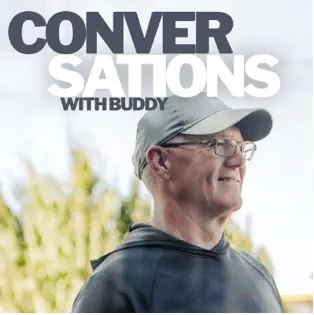On October 20, 2021, Governor Brown utilized her executive clemency authority to retroactively change prison sentences for approximately 75 individuals statewide.[1] Those offenders are serving adult-length sentences for violent crimes that they committed when they were 15, 16, or 17 years old.[2] She cited the changing landscape of juvenile justice and the legislature’s passage of SB 1008 that alters sentences for violent juvenile offenders going forward. She thus retroactively applied the legislature’s will for future offenders to all those who were already lawfully sentenced.
That blanket clemency order affected 17 individuals previously convicted by the Marion County District Attorney’s Office. This group represents some of the most violent offenses that we have seen juveniles commit in our community and they were sentenced to substantial prison sentences as a result. For example, of that seventeen:
- 8 were convicted of Aggravated Murder, Murder or Attempted Murder;
- 8 were convicted of Sodomy in the First Degree or Rape in the First Degree (using force or sexually assaulting a child under 12 years old); and,
- 1 had been convicted of Assault in the First Degree (causing serious physical injury with a baseball bat to the extent the victim is now blind, deaf in one ear, and will need significant medical care for the rest of his life).[3]
Now, virtually overnight[4], each of these offenders may request a parole hearing to determine whether they should now be released back into our community.
Perhaps this sounds fair. Maybe even compassionate in light of that legislation. But if you look a little closer, you will see that the Governor’s decision to grant these violent offenders clemency and the process by which she did it, suffers from a lack a real individualized assessment, transparency, and trauma-informed victim services.
First, the Governor’s failure to notify victims prior to her granting these offenders clemency was appalling. She further did not even notify the 36 District Attorneys across our state so that our offices could do that work for her. Instead, the Governor notified the press and victims learned that their offender is now eligible for release along with the rest of the state by reading a news article in The Oregonian.
An offender’s sudden or unknown release (or lack of meaningful input regarding the same) is one of the most common and fundamental concerns that prosecutors hear from victims during the criminal justice process. The Governor’s method here only serves to fuel those fears. Victims are entitled to information and meaningful input regarding an offender’s sentence, especially in circumstances involving the critical safety issue of release eligibility. Here, the Governor’s lack of process violated these fundamental victim rights in both form and substance.
Second, the Governor’s blanket clemency order is not specific to individual offenders based on the facts of their particular case and their own individualized rehabilitation. Such an order runs contrary to the historical and generally-accepted use of the clemency power. This group of offenders were instead painted with one broad brush to correct what the Governor perceives to be a statewide, unjust juvenile justice system.
Any nobility of such a belief fails when one looks at the Marion County offenders to whom the Governor just granted clemency. As District Attorney, I wholeheartedly disagree that they were treated unjustly. Quite the opposite. Justice was done in each conviction that my prosecutors worked so hard to ensure. And I am in awe of the victims who bravely came forward to share their stories, navigate the criminal justice system and tell the painful truth to hold their abusers accountable.
These offenders gifted with clemency represent the worst offenses that can be committed under Oregon law, including murders and attempted murders; serious, repeated sexual assaults on prepubescent children; and (to a much lesser extent) aggravated assaults.
It is equally important to also highlight the type of offenses that are NOT on the Governor’s clemency list for Marion County, such as low-level robberies, property crimes, drug offenses, public nuisance offenses, or lower-level sexual assaults. Her order does not affect those offenders (which comprises the vast majority of juvenile offenders) in large part because my Marion County prosecutors never sought adult-level incarceration sentences for that conduct. Instead, Deputy District Attorneys appropriately requested probation, treatment, diversion courts or shorter terms of detention under the supervision of the juvenile court to address that type of delinquency behavior. In short, we sought reformation and restorative justice in those cases where it was appropriate. But in those cases where offenders murdered, violently beat and sexually assaulted members of our community, we sought incarceration.
These same prosecutorial efforts found in my county are generally true statewide. As a snapshot example, in March 2016, there were approximately 423 individuals statewide serving an adult-length sentence for conduct they committed as a juvenile. Of those sentences, 41% were for sexual offenses, 30.6% were for homicide or attempted murder offenses, 23.7% were for robberies and 4.6% were for assaults. Of the sexual offenses charged, nearly 82% of all the sex crime victims were 12 years or younger.
Nevertheless, Oregon’s Legislature radically changed how juveniles could be sentenced as adults in 2019 under SB 1008. Now, under that law, regardless of how many victims the offender has or how many times the offender commits their crimes, the offender will be released at age 25 without any further supervision. If they are waived into adult court, (which is an all-but impossible legal process[5]) they are guaranteed a parole hearing after 15 years no matter the length of their total sentence.
And so now, without victim input or even any proper notice, the Governor has chosen to apply that law retroactively through her clemency authority.[6] And that choice reveals a bias against victims of crime in favor of the offenders who abused them. The trust these victims have in our system is rightly shaken.
Finally and perhaps predictably, poor process yields poor results. As one example, the Governor’s October 20th order has granted clemency to at least one individual to whom she had denied clemency only 35 days prior.[7] The only difference was that this time, she did not consider what he did-merely how old he was when he did it.
Proponents of the Governor’s decision will undoubtedly argue that her clemency merely grants an opportunity for release, and that the parole board can still deny release if the offender is still dangerous. This oversimplification ignores the practical application of the law.
Because, when Oregon’s Legislature passed SB1008, it also changed the rules by which the parole board must allow release. Those rules now require a “meaningful opportunity to be released” (new, undefined language) and requires the parole board to “give substantial weight to the fact that a person under 18 . . . is incapable of the same reasoning and impulse control as an adult . . . .” Furthermore, the board “shall release” an offender if “the person has demonstrated maturity and rehabilitation.”[8] In short, SB1008 stacked the deck to favor release.
What does that mean locally? It means that Juan Cruz-who was between 17 and 22 years old when he repeatedly sexually assaulted his victims (one time holding a pillow over his 11 year old victim’s head as he anally sodomized him so adults couldn’t hear the victim’s cries of pain and made his 7 year old victim take her clothes off so he could touch her and penetrate her vagina with his fingers) is presumed to have been “incapable of . . . the same reasoning” as an adult when the parole board considers his release back to Marion County.
I realize that these are painful facts merely to read about. Now imagine how it feels to be victimized in this way. And then imagine the despair and fear in knowing that your abuser is about to be released into your community.
My staff recently notified the Marion County victims and families affected by the Governor’s order. We unfortunately have very little information regarding process or next steps to share with them. These calls are often traumatic for these victims to receive, difficult for my staff to make, and heartbreaking for us all as the past is dredged up and any belief in finality is betrayed.
I am proud that my office has done the right thing and held these violent offenders fully accountable for their behavior. But the herculean efforts of both my office and that of these courageous victims has now been undermined in a process that disregards victims, ignores legislative promises about retroactivity, discounts law enforcement experts, and fails to adequately assess these individual offenders and their risks to our community’s safety. To say I am disheartened is an understatement. I am discouraged. I am disappointed.
Oregon’s Legislature created a more serious problem than it thought it solved when it passed SB1008 in 2019. And now an entirely different branch of government has found a way to make it worse. Similar to assurances that recent death penalty legislation was not retroactive, we are once again witness to a continued betrayal of promises. And victims must watch from the sidelines.
I believe our communities should expect more from our leaders. And I know victims deserve better.
Paige Clarkson
District Attorney, Marion County
https://www.co.marion.or.us/DA/Pages/juvenileclemency.aspx
[1] The Governor’s executive clemency power rests in the Oregon Constitution. See Or. Const. Art. V, sec. 14. It allows the Governor to unilaterally reprieve, pardon, or commute a previously imposed criminal sentence. Its purpose is to provide the executive branch of government a check on the judiciary branch. Traditionally this process is reserved for extraordinary situations to correct an injustice, involved a very comprehensive and fact-specific analysis, and was used sparingly.
[2] Juveniles convicted as adults serve the same length of time as adults but they don’t serve that time with adults at the State Penitentiary. Instead, they overwhelmingly remain at the Oregon Youth Authority until they are 25 years old. The exception is if inmates commit new crimes as adults while at OYA, or are a safety risk to the other youth and needed to be transferred. Under no circumstance is someone under the age of 18 housed with adults.
[3] See attachment for a short summary of each offender’s convicted conduct.
[4] Effective December 4, 2021, these offenders are eligible for a release hearing before the parole board. See ORS 144.397












